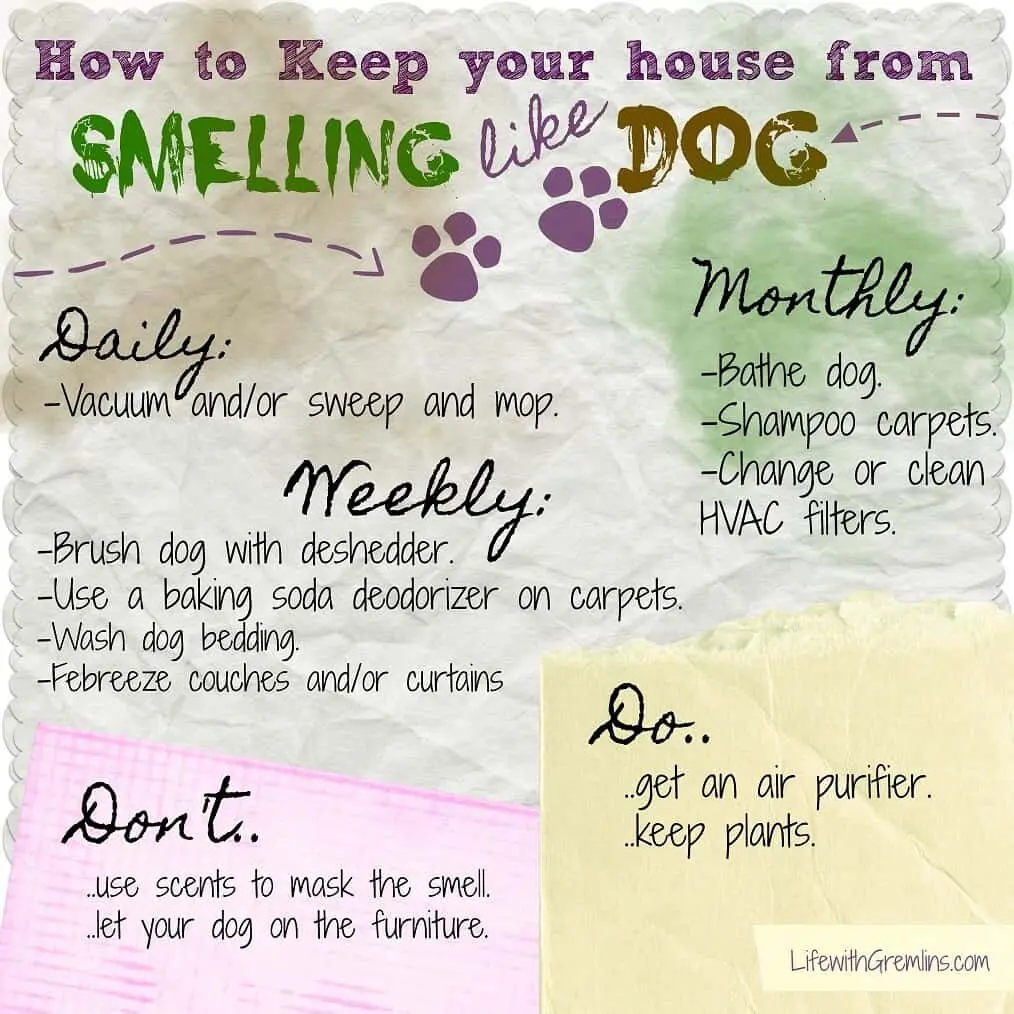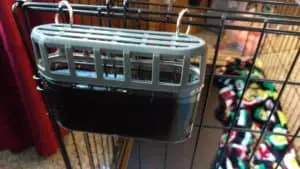Dogs, well, they smell. Some dog breeds are more prone to being stinky than others, but unless you take steps to avoid it, if you have a dog, your house will also smell like dog. Whether you just got a new puppy, or you’ve just discovered your house already smells like dog, fighting the smelly dog house problem isn’t really a one-step process nor a one-time one, but less unfortunately, it also isn’t hard. So, where do you start?
With the dog. The first step in keeping your house from smelling like dog or getting rid of the smell of dog in your house is to keep the dog clean.
Keeping your dog less-smelly:
You should aim to bathe your dog about once a month. Over-washing can lead to skin issues though, so try not to be more frequent than that unless your dog has gotten himself into a wash-worthy mess. You can also use an odor control shampoo such as Nature’s Miracle Supreme Odor Control. After bathing dry your dog or confine him/her to their kennel to dry. If you set a wet dog loose in your house, he’s bound to rub, roll, and spread wet dog stink all over your home. This is also a good reason to clean the bathroom after baths.
Between bathing, brush your dog weekly with a good de-shedder followed by a slicker brush. This cuts down on shedding and dander, while keeping your dog’s coat healthy.
Next, you want to keep your dog’s bedding clean, so he/she stays cleaner. If your dog has a crate with blankets or bedding or even just a dog bed, wash it weekly with a deodorizer. I’ve found an Oxyclean soak works well. You may find it easier to have two blankets/beds so that your spoiled furry friend doesn’t have to go without bedding while it deodorizes.
You can also place a pet-safe deodorizer near your dogs most frequent sleeping location. Keep in mind that heavily fragranced options can be dangerous to dogs. Even natural options such as essential oil diffusers are not a good idea. You want something that absorbs odors, not masks them, things like baking soda or charcoal. I like to use a charcoal-based closet deodorizer clipped to my dog’s crate like so (the clips are just book rings from the office supply section), but no matter your choice, also take care that your pet can’t access and so destroy whatever it is (especially puppies).
Keeping your house from smelling like the dog:
Now that you’ve minimized the stink of your dog, you want to keep that minimized stink from settling into your house. This is particularly important if you have carpet, which can really hold on to odors.
Vacuum or sweep/mop the areas where your dog frequents daily. You may not be able to see it (until you’re cleaning it up at least), but you’d be surprised how much even a well-groomed dog can shed in a day.
If you don’t have carpet, a steam mop that kills bacteria is a great option that makes mopping faster and chemical free.
If you have carpet, about once a week consider using a baking soda deodorizer before vacuuming, and about once a month consider shampooing your carpets. Particularly if you start with your dog at puppyhood, a home carpet shampooer is an invaluable investment. Any accidents during potty training can easily be cleaned up, and you can continue to use it throughout your dog’s life to keep your carpets from smelling like dog.
If your house already smells like dog, and you’re playing catch up, I’ve successfully de-dogged the stinkiest of carpet by vacuuming thoroughly, shampooing with Bisselll Professional Pet Odor Eliminator coupled with PetBoost Oxy, followed by the application of baking soda while still wet. Once it dries, vacuum off the baking soda. If there’s a particular room that still smells, you have to sniff for problem areas. I know this sounds funny, and you look funnier doing it, on your hands and knees sniffing at the floor, but it’s necessary. Chances are if a room smells of dog after the above cleaning a dog has pottied in the room. You’ll need to use a non-ammonia based cleaner such as Nature’s Miracle Odor Eliminator on the spot. Then re-shampoo the area.
If you have cloth couches, curtains, etc. deodorize them with something like Febreeze or a home-made natural version once a week or so. If pet dander particularly bothers you or you have allergies, I also suggest keeping a lookout for deals on leather furniture. While pet paws can more easily damage leather (another good reason to keep Fido off the couch), keeping it clean and odor-free is far easier.
Finally, keep the air in your home clean.
An air purifier can not only reduce allergens and improve air quality for you, but it also will help keep your house from smelling like dog. You don’t necessarily need something big and expensive, a single room unit such as this one in the room your dog chills in the most is an inexpensive huge help.
Plants act as natural air purifiers while also increasing humidity. There are a wealth of low-maintenance, impossible-to-kill options out there that can even survive on low light such as spider plants and ivy. A good rule of thumb is one plant per 50-ft.
You also want to change any filters to your heating system more frequently (every 30 to 60 days is a common recommendation with pets). Vacuum out any heating vents or air intakes when you change your filters. This may not apply depending on the type of heating in your home.
I know this all sounds like a lot, but much of this routine is easily integrated into an existing cleaning schedule, and the pay off—a dog without the dog stink—is well worth it.


